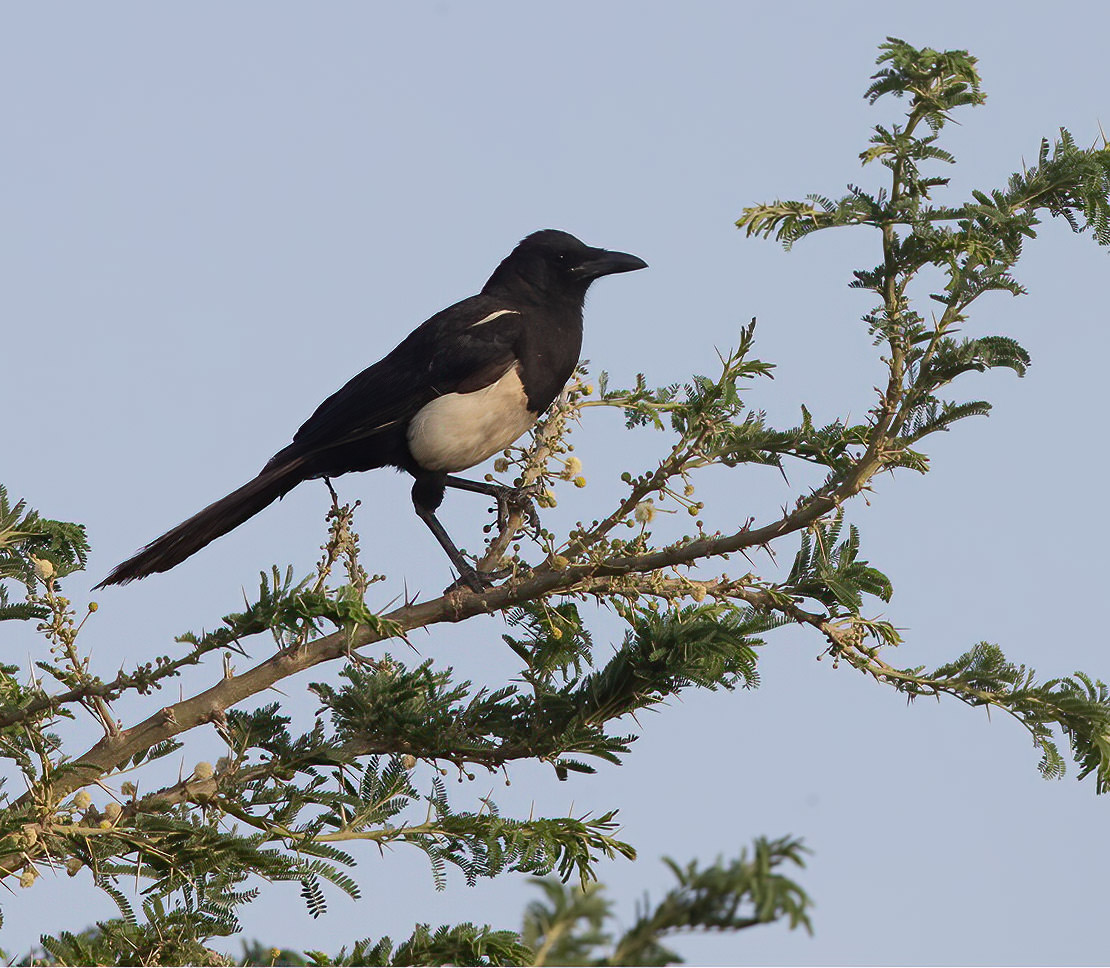Afghanistan – Armenia – Azerbaijan – Bahrain – Cyprus – Egypt – Georgia – Iran – Iraq – Israel – Jordan – Kazakhstan – Kuwait – Kyrgyzstan – Lebanon – Oman – Qatar – Saudi Arabia – South West Russia – Syria – Tajikistan – Türkiye – Turkmenistan – United Arab Emirates – Uzbekistan – Yemen

Capital: Riyadh
Area: 2,149,690 km2
BirdLife International partner: Saudi Wildlife Authority
Total number of bird species: 517
Globally threatened bird species: 20
Country endemics: 1
Important bird and biodiversity areas: 39 IBAs with a total area of 46,526 km2
Rare birds committee: There is currently no rare birds committee in Saudi Arabia.
Specialities:
Arabian endemics
Philby’s Partridge, Arabian Partridge, Arabian Scops Owl, Arabian Spotted Eagle Owl, Arabian Green Bee-eater, Arabian Woodpecker, Arabian Magpie, Yemen Warbler, Yemen Thrush, Arabian Wheatear, Arabian Waxbill, Arabian Golden-winged Grosbeak, Arabian Serin, Yemen Serin, Yemen Linnet
Other specialities
Harlequin Quail, Socotra Cormorant, Egyptian Nightjar, Montane Nightjar, Hypocolius, Thick-billed Lark, Arabian Lark, African Pipit
ABBA project
The Atlas of the Breeding Birds of Arabia (ABBA) aims to document the distribution of breeding birds in the Arabian Peninsula including Saudi Arabia. The project is run by Mike Jennings and birdwatchers’ field observations are a valuable source of data. For information and notes on reporting, along with breeding record submission forms, please email Mike: mikejennings@arabianbirds.com.
Ornithological interest:
Saudi Arabia is the largest country in the Arabian Peninsula and is probably the best country to search for the Arabian endemics, as well as a number of other specialties. Most of the country is uninhabited desert that includes the Rub’ Al Khali (the Empty Quarter), the largest mass of sand in the world, and the An-Nafud Desert, where sand dunes often exceed 30 metres in height. The country is bordered by the Arabian Gulf to the east and the Red Sea to the west. High ground includes the Hejaz Mountains in the north-west and the Asir Mountains in the south-west where the land rises along the edges of the Red Sea, with Jabal Sawda (the Black Mountain) being the country’s highest point at 3,100 metres. This mountain range is home to fourteen of the fifteen bird species endemic to the Arabian Peninsula (the only species not present being Yemen Accentor). The south-west of Saudi Arabia is the only place in the world where the now-endangered Arabian Magpie can be found.
The country is situated on important north-south and east-west migration flyways and is an important staging post for many migratory species. Migration is more substantial in western Saudi Arabia, with many birds passing down this side of the country and into Yemen, before crossing the straits at the Bab-al Mandeb into Africa. Saudi Arabia is also a key wintering location for a number of different raptors including Steppe, Greater Spotted and Eastern Imperial Eagles whereas Tabuk in the north-west and Haradh in the south-east are important wintering areas for the critically-endangered Sociable Lapwing. During the summer months, a number of African species visit the south-west of the country to breed and these include Abdim’s Stork, Diederik Cuckoo, Klaas’s Cuckoo, Grey-headed Kingfisher, White-throated Bee-eater, Gambaga Flycatcher and Violet-backed Starling. Certain rarely-seen subspecies endemic to Arabia occur such as African Pipit Anthus cinnamomeus eximius, Common Buttonquail Turnix sylvaticus lepurana and Harlequin Quail Coturnix delegorguei arabica. Large numbers of Hypocolius winter in Saudi Arabia while other speciality species that breed include Socotra Cormorant, Harlequin Quail, Egyptian, Plain and Montane Nightjars, Arabian Green Bee-eater, Thick-billed and Arabian Larks, and African Pipit.
Best times to visit:
Late February to mid-May is a good time to see a wide range of spring migrants with the possibility of encountering rarities and the increasingly-scarce Macqueen’s Bustard which breeds in very low numbers in the summer. The summer months can be very hot although the Arabian endemics in the Asir Mountains can be reliably located and this high area can be cooler. Also in summer, look for breeding African visitors in the south-west, Egyptian Nightjarin the east and Thick-billed Lark in central regions. In autumn, one can witness the migration of raptors, including Steppe Eagles, as they head south along the western mountains to the straits at the Bab-al Mandeb before crossing into Africa. Winter is a good time for overwintering species such as Hypocolius, Sociable Lapwing, Greater Spotted, Steppe and Eastern Imperial Eagles, as well as shorebirds and ducks.
Essential reading:
Porter R & Aspinall S (2010) Birds of the Middle East, Christopher Helm.
(Nature Guides Ltd) دليل الطيور في الشرق الأوسط: تطبيق على نظام أندرويد وآبل
بورتر، ر.، أسبينال، س.، 2016. طيور الشرق الأوسط. ترجمة عبد الرحمن السرحان وتدقيق لغوي وعلمي: نابغ غزال أسود. إصدار البيردلايف انترناشيونال وجمعية علم الطيور بالشرق الأوسط والقوقاز. عمان، الأردن
The above two references in Arabic are the Arabic smartphone app version of Birds of the Middle East (Porter & Aspinall) and the Arabic book version of Birds of the Middle East (Porter & Aspinall).
Jennings M C (2010) Atlas of the Breeding Birds of Arabia, Fauna of Arabia Volume 25, Karger Libri.
Environmental Protection Department Saudi Aramco (2017) Field Guide to the Biodiversity of Dharan, Motivate Media Group.
Boland C & Al Suhaibany A (2020) The Birds of Saudi Arabia, Saudi Aramco, Motivate Media Group.
This is published in two volumes in both English and Arabic and PDF versions are here:
English: Volume 1
Arabic: Volume 1
Shirihai H & Svensson L (2018) Handbook of Western Palearctic Birds: Passerines, Christopher Helm.
Trip report links:
24 March-17 April 2003 – Saudi Arabia and Qatar
Compilers:
Jem Babbington and Phil Roberts
